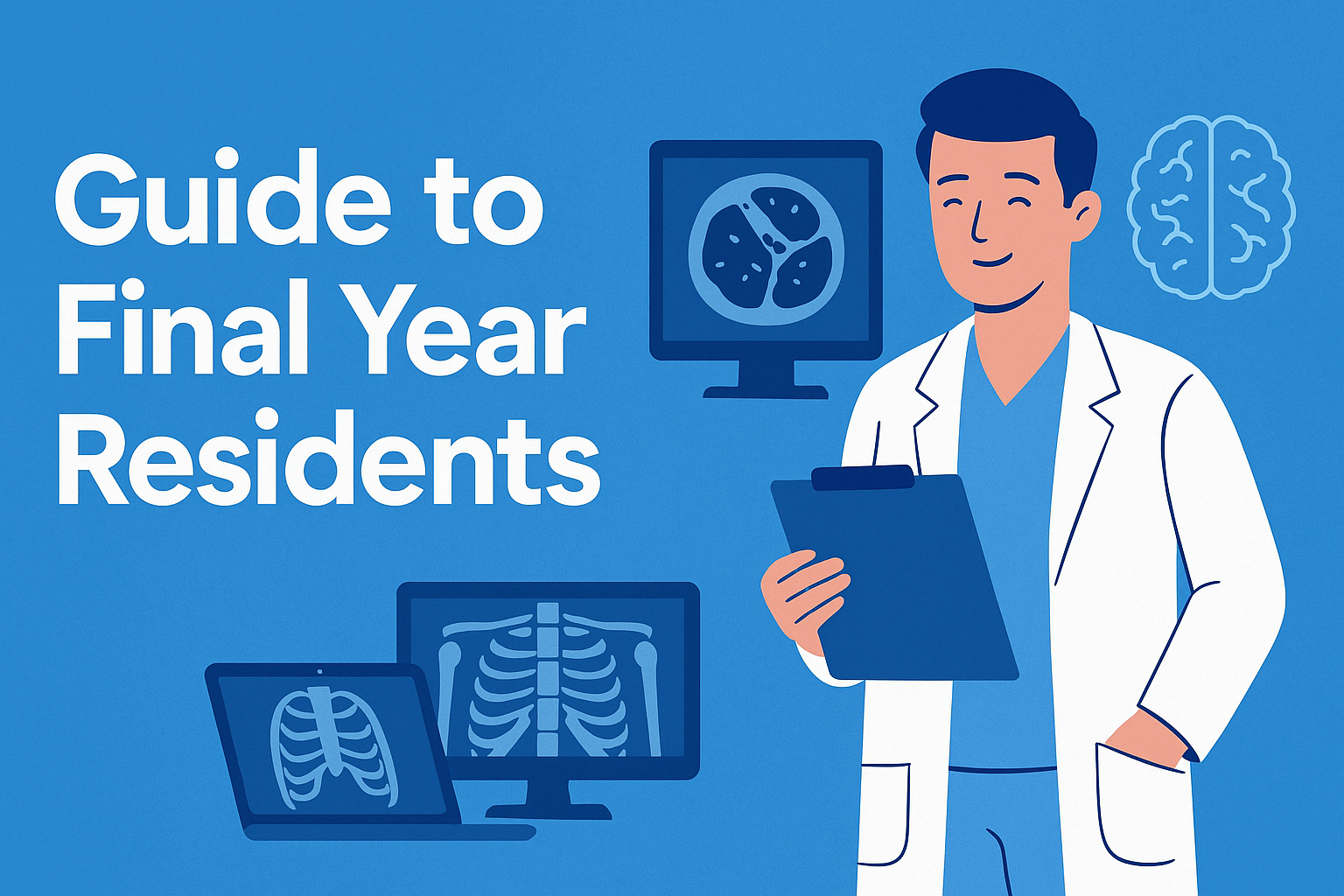So, you’ve survived three years of radiology. That itself is no small feat. Now comes the last challenge—the final exam. The way the system works isn’t perfect. In the first year, you’re too busy with department work to read much. In the final year, you’re buried in books but hardly get to apply them. Strange? Yes. But since we can’t change the system right now, let’s figure out how to beat it.
The Thesis – Your First Hurdle
Think of your thesis like a long experiment. If you wait until the end, it feels like carrying a rock uphill while studying for exams. If you start early, it becomes just another project. Edits will always come, so leave space in your timeline. If you finish it well before exams, you’ll thank yourself later.
Theory Papers – Making Sense of the Jungle
Theory isn’t about showing you can report a single scan. It’s about showing you can connect physics, anatomy, and imaging to clinical medicine. That’s why past question banks are so useful. They show you the examiner’s favorite playgrounds.
Pick one reliable book per system. Don’t juggle too many. If your book is missing content, stick your own notes or a printout into it. On the last day, you’ll revise from one book, not ten. That’s the trick.
Line diagrams? They’re little gems. They make your answer look sharp and fetch marks even if you’re running out of time. Physics? It slips out of your brain faster than any other subject. Read it. Then read it again. And again.
Recent Advances – The Exam’s Favorite Toys
Examiners love asking what’s new. Journals are full of dense articles, but you don’t need all of them. Just pick the ones that look like exam questions—dual-energy CT, MR spectroscopy, elastography, PET tracers, contrast updates, teleradiology basics. Keep a short list of these in your main book so you can revise in minutes.
Practical Exam – The Real Test
This is where nerves kick in. But it’s also the most fun if you’ve practiced. Don’t just look at single spotter slides. Go through full CT and MRI datasets when you can—that’s what you’ll face in exams.
Know your instruments. Even something basic like a grid or cassette may be asked. If you fumble, it leaves a bad impression. Learn contrast protocols properly—if you can confidently quote standard guidelines, examiners nod in approval.
And remember: your thesis is fair game. Be prepared to discuss it clearly. During spotters, always write complete answers: “Sessile osteochondroma involving the distal radius” instead of just “osteochondroma.” Details matter.
The Tools You Really Need
You don’t need every book under the sun. A few standard system textbooks, one book of differentials, one for procedures, and a practical exam guide are enough. Add a couple of case review books. Everything else—shared PowerPoints, Telegram spotters, online playlists—is extra practice. Use them, but don’t drown in them.
Practice presenting cases to your faculty and peers. Examiners want to see how you think, not just how much you memorized. Use mnemonics if they help, but don’t blurt them out—some sound silly in front of an examiner. Sleep well before the exam day. Handle films gently; examiners treasure those cases. And please, don’t cheat—the person next to you is just as confused as you are.
The final exam is less about memory and more about clarity under pressure. If you simplify your notes, revise physics often, practice real cases, and keep calm, you’ll do fine. Radiology itself is about noticing what others miss. Apply that mindset here. Stay sharp, stay steady, and good luck.
